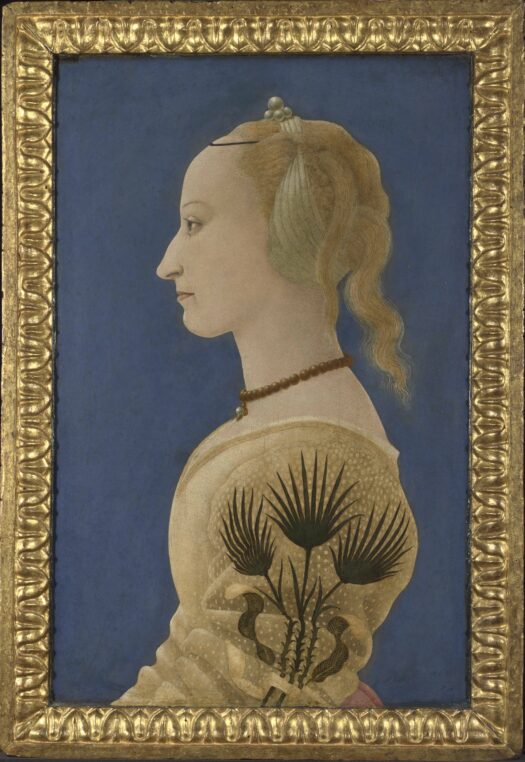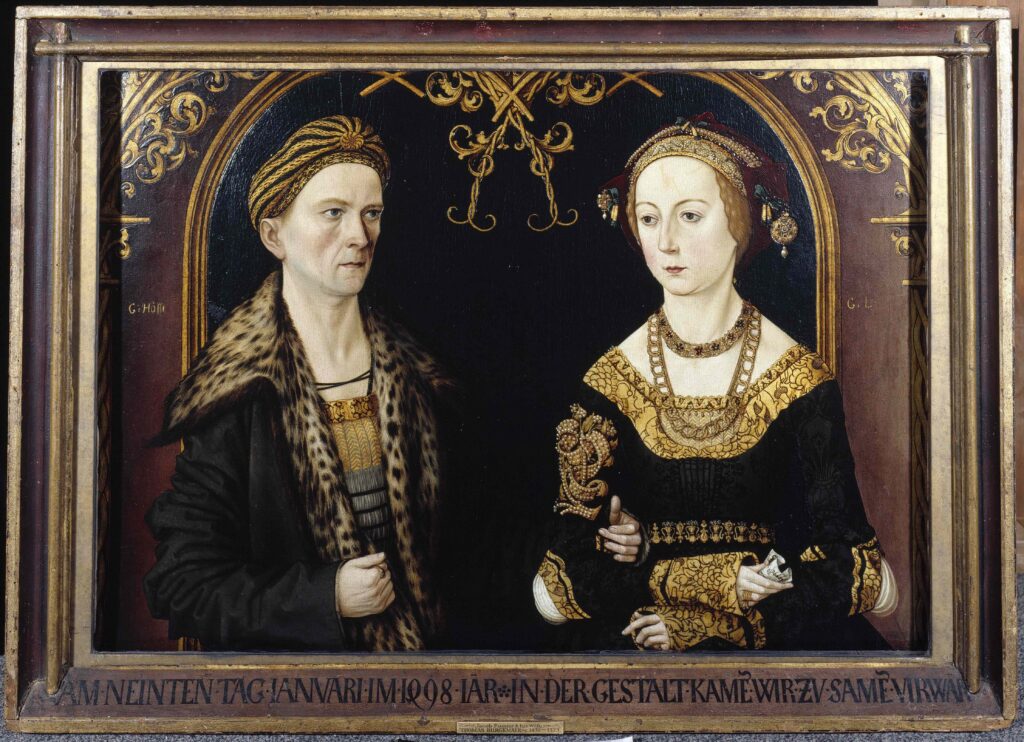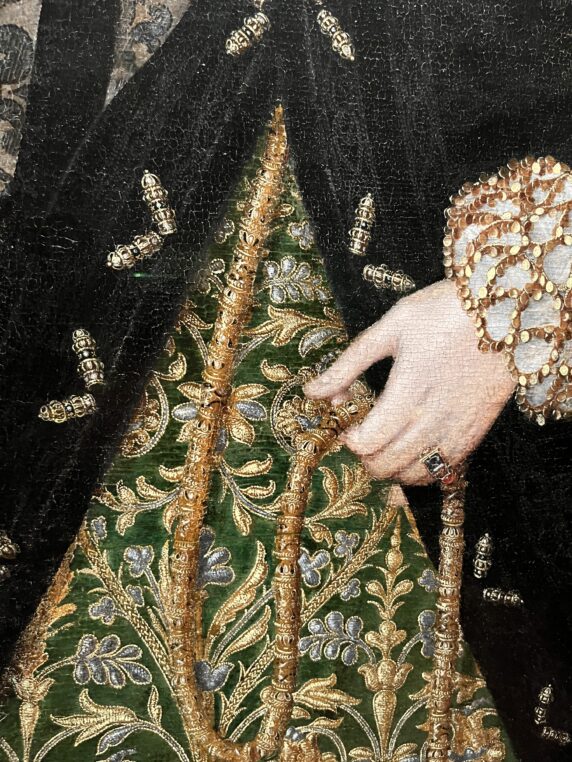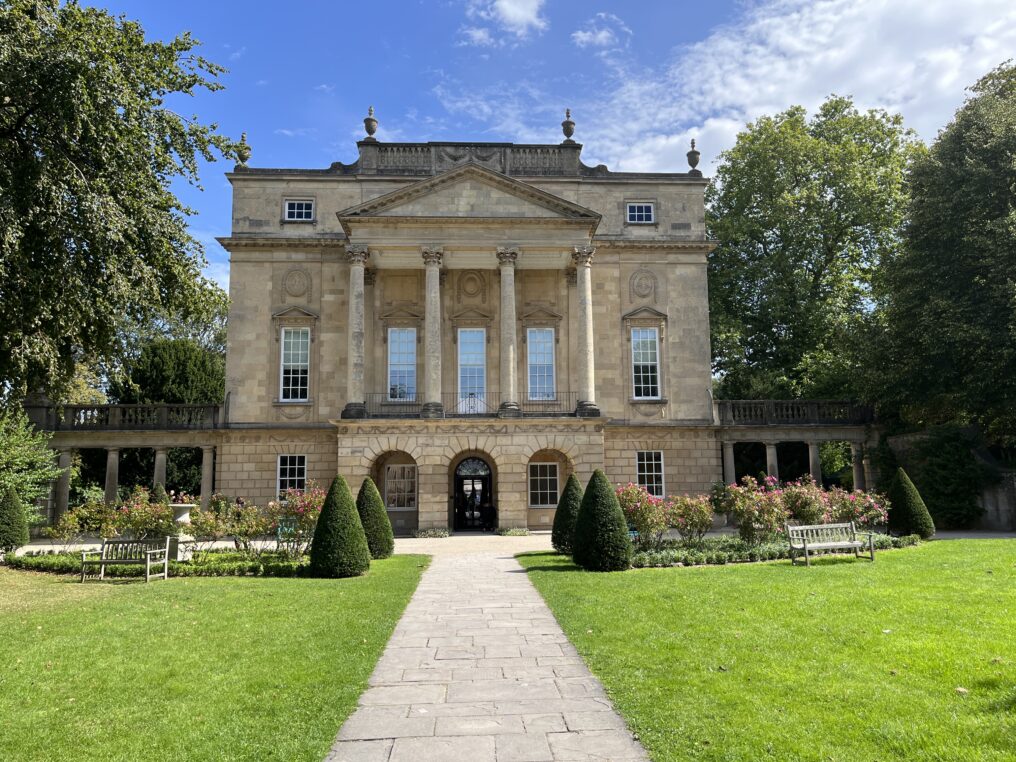
Alesso Baldovinetti, Portrait of a Lady, c.1465, The National Gallery London. The young woman is dressed in the gold and white finery provided by her husband displaying the family’s coat of arms of palm leaves and gold feathers
I had to attend my dear Nic Barlow’s memorial service in Gloucestershire and decided to make it a cultural day, stopping in the beautiful city of Bath. A whole page article in the Saturday edition of the Financial Times (I love its “How to spend it” section) alerted me to a small exhibition at the Holburne museum on “Painted Love, Renaissance Marriage Portraits” (until October 1). The show is excellent with many loans from the National Gallery in London but the whole museum is interesting and made me discover the wealth of Bath’s gentry in the 18 th century. I did not have time to spend a week end but it is a great destination not far from Bristol, with different museums including one of East Asian art and the largest American Museum outside the US and good hotels.

Hans Burgkmair the Elder, Marriage Portrait of Jakob Fugger and Sybilla Artzt, 1498, Schroder Collection
When you first walk into the Holburne Museum, you are struck by the perfect architecture and the blonde stone which is characteristic of the whole Georgian city built in the 18 th century by architect John Woods and quarry owner Ralph Allen. The homogeneous style is what strikes the eye at first. The building was conceived as a hotel and was the (paying) gateway to the large Sydney gardens beyond. The collection was made and given to the city of Bath by Sir Thomas William Holburn (1793-1874) who joined the navy at 11 and fought at Trafalgar in 1805. It includes paintings by Gainsborough and Zoffany of the great families in Bath, many Bruegel’s, but also the Steinway on which Rachmaninov played in Britain during the 1930s and excellent china and Wedgwood.
While the city has always been renowned for its baths since the Romans, it was also a great entertaining place for society in the 18 th century and much of the money came from the plantations in the Caribbean or in Bengal. The exhibition concentrates on portraits which were part of the marriage negotiations and played an essential part in the rituals and ceremonies of alliances. Paired portraits gave the opportunity for the elite to proclaim the prestige and wealth gained from the merging of the two families. One of the first paintings in the show is by Corneille de Lyon of Madeleine of France (1520-1537) at 16. She was François I’s fifth child and James V of Scotland became infatuated with her. They were married at Notre Dame on January 1 1537 and she died in her husband’s arms, six months later in Leith near Edinburgh. It is exquisite.
Another portrait of Louis XII, who took as his third wife, Mary Tudor, Henry VIII th sister, shows how tight knit the relations between French and English royal families were. Another portrait of Katarina, Archduchess of Austria, age 2 and later Queen consort of Poland is impressive in its luxury. Italian Renaissance portrait of Leonello d’Este by Giovanni da Oriolo resembles a Roman emperor’s profile while Constanza (de’ Medici) Caetani’s celebrating her marriage is full of symbols of chastity and shows the rings given by her fiancé. The gold pins and needle presented to her after the consummation of her marriage symbolize her new domestic responsibilities. She wears a white cap, symbol of married women.
The ambiance in the museum is charming with very friendly staff and you can stop at the cafeteria which has an outdoor terrace on Sydney gardens. So you have until October 1, to see this excellent exhibition but can plan a week end in Bath later. It is 19 miles from Bristol airport and 12 from the city of Bristol which is well worth visiting also. The Holburne museum.
Share this Post




2 Comments on “In Bath, Renaissance power couples are exposed at the Holburne.”
Chere Laure– Did you by any chance run into the ghost of Beau Brummel in Bath?
Hugs
Jon R
Merci, Laure, c’est très beau, ça fait rêver !
Jean